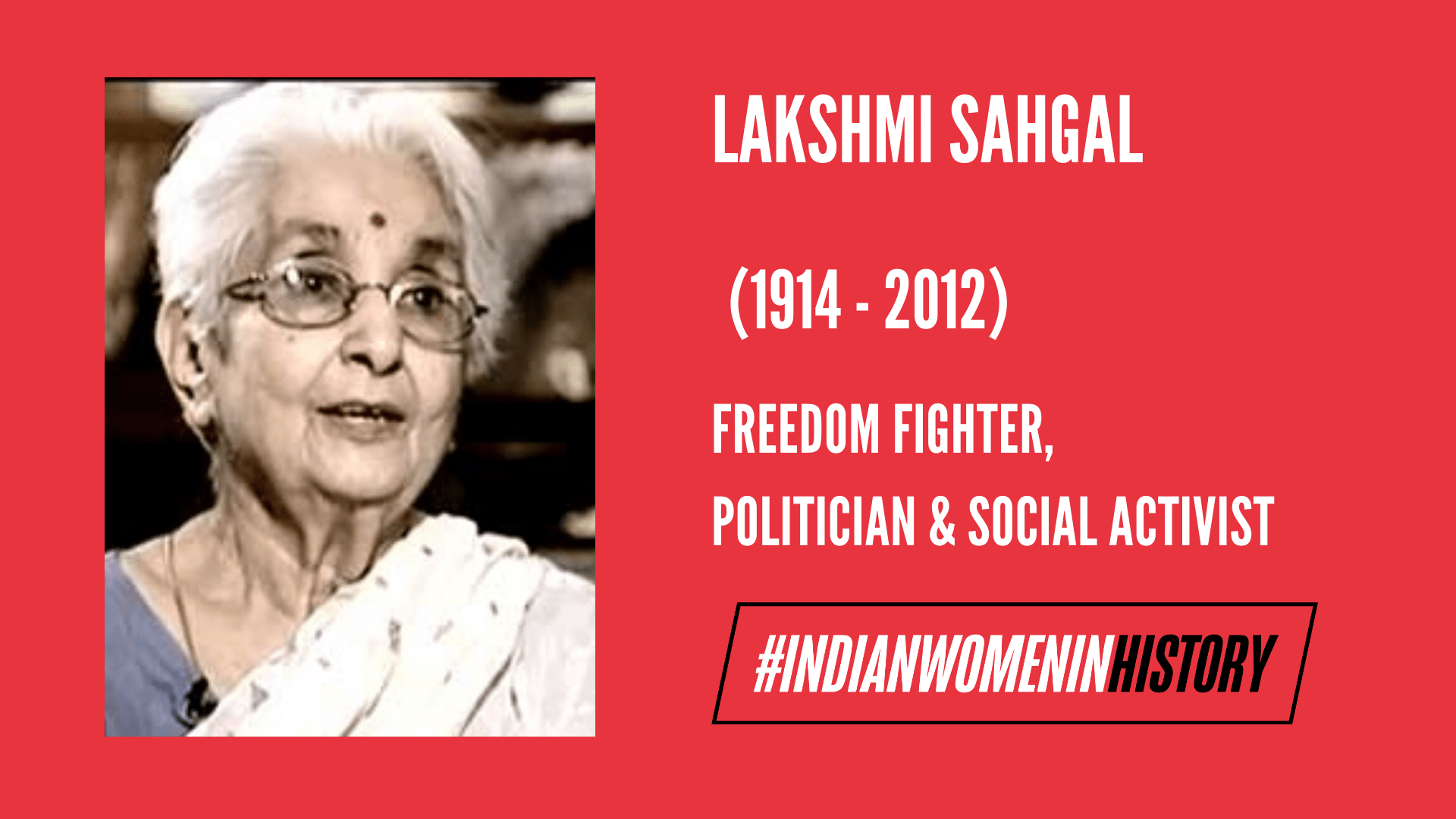Lakshmi Swaminathan, popular as Capt. Lakshmi Sahgal was born on 24 October 1914 to Ammu Swaminathan, a social worker and Dr. S. Swaminathan, noted lawyer in Chennai. A Padma Vibhushan awardee in the year 1998 was a significant voice of Indian women’s movement prior to the Independence and later as well, carefully drawing a line between politics and activism on women’s issues. She worked as a medical practitioner in Singapore after completing her medical education from Madras Medical College in 1938.
Her meeting with Subash Chandra Bose in Singapore changed a lot for her. However, she had seen him in meetings and programmes when she had accompanied her mother in her early childhood days. While talking about her days in the Indian National Army, she narrates about her unwillingness to be a part of the recruitment drive of doctors into the (British Indian) Army post Second World War and therefore, she chose to go to Singapore in 1940 to pursue her medical practice.
“The Japanese forces attacked Singapore on December 8, 1941. Rashbehari Bose, who was a veteran freedom fighter, had come with the Japanese. He started the India Independence League. All Indians were expected to join the League. It was helpful because we got our ration cards, and Indian property was not treated as enemy property, and Indians were not recruited forcibly. I joined the League but could only do welfare work and underground broadcasts.” – Lakshmi Sahgal in My days in the Indian National Army
Source: Pinterest.com
Women activism in India had reached at its peak in 1980’s however, the participation of women in the movement begins from freedom struggle against Britisher’s to which Capt. Sahgal remains significant in extending Bose’s call to all citizens, specifically women asking them to join Indian National Army (INA). Speaking about her childhood days, Dr. Sahgal had freedom to express her opinion and get involved in outdoor games, horse racing, driving cycle, etc. In India, such freedom was a rare sight for women. The visits of congress men was quite regular to her parental house and that is where she got inspired to be part of the freedom struggle later.
On 8 July 1943, Sahgal had started recruiting other women into INA. Soon a regiment of 1500 women trained as soldiers was ready. In the Provisional government of Azad Hindi formed by Bose, Sehgal was appointed as a minister and handed over the portfolio of Women’s Affairs and Rani of Jhansi Regiment. Subash Bose was equally overwhelmed to find a woman to lead the regiment.
Apart from physical training which was quite challenging, including marching up to 40 miles, climbing, crawling on the top of the mountains. It also included training with weapons such as rifle and hand grenades. Additionally, they were taught about military tactics, strategies, map reading and additional classes for learning of Hindi were held. The women brigade was a source of inspiration for many others who eventually in the later days became part of the freedom struggle. Each of the women had the courage and the training to tackle the war despite that their tents were totally destroyed in the British jet attacks.
The women brigade had also scripted their own song,
“Hum Bharat ki beti hai,
Abhi utha hua talwar,
Hum Bharat ki beti hai,
Hum nahi nahi hai ladai ke,
dekho itihaas dikha ke,
Hum chaturani bharat ki”
Capt. Sahgal joined Communist Party of India (Marxist) in 1970s and became founder member of All India Democratic Women’s Association in 1981. Her commitment to the issues of women and social change remained a part and parcel of her life. Not only her image but work and personality also remains alive in public memory. Prominent CPI(M) leader Brinda Karat calls her “symbol of courage” and “symbol of woman’s expression” .In her visit to Gujarat post 2002 genocide, she was accompanied by her niece, Mallika Sarabhai who were greeted by the people of INA with the slogans of “Inquilab Zindabad”. In 2002, she contested as candidate for the Presidential elections against APJ Abdul Kalam from CPI(M).
She died of a cardiac arrest causing brain stroke on 23 July 2012 in Kanpur at the age of 97 after suffering from a prolonged sickness. In her final rites, tributes were paid by political leaders from various parties, activists, communists, school children as well as students from colleges and universities amid revolutionary slogans.
Across generations, people admire her, and women especially such is her aura and contribution in public and social affairs. Some lives are born to make a difference and such was the figure of our beloved Lakshmi Sahgal who lived for other’s celebrating life, happiness, freedom and Nation.
Featured Image Source: Women’s Web
Twinkle Siwach, Freelance Writer and Research Scholar, Centre for Media Studies, Jawaharlal Nehru University.




